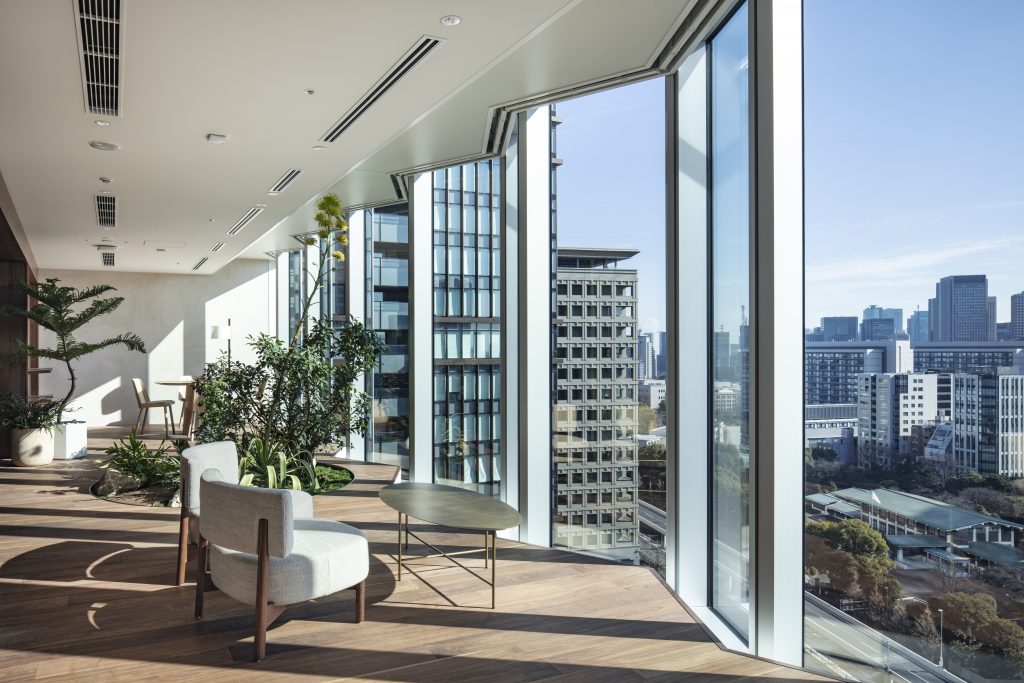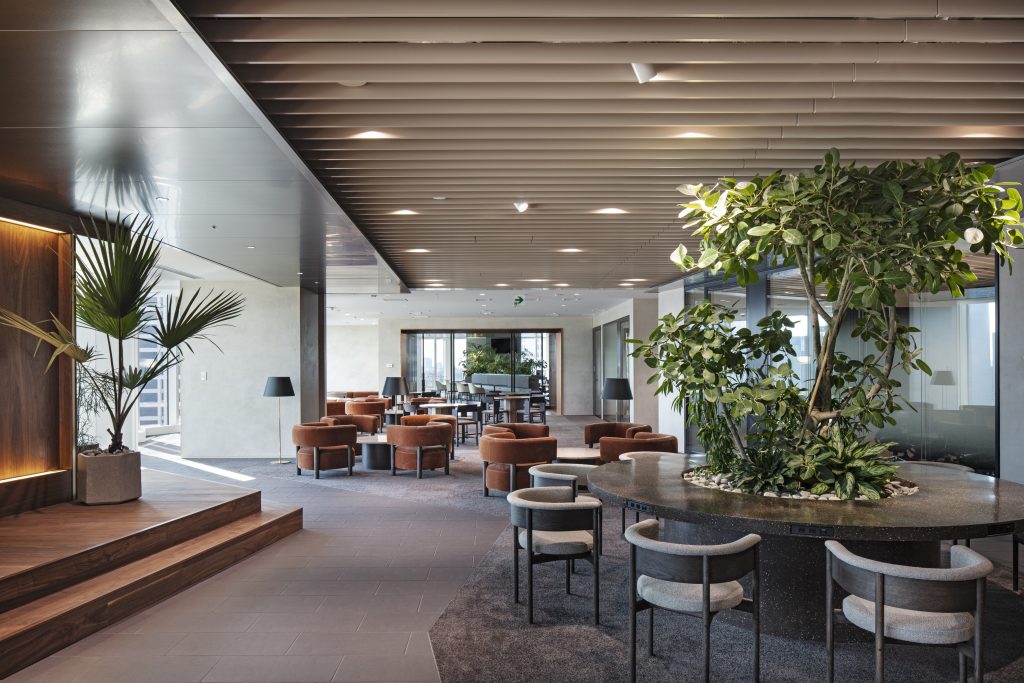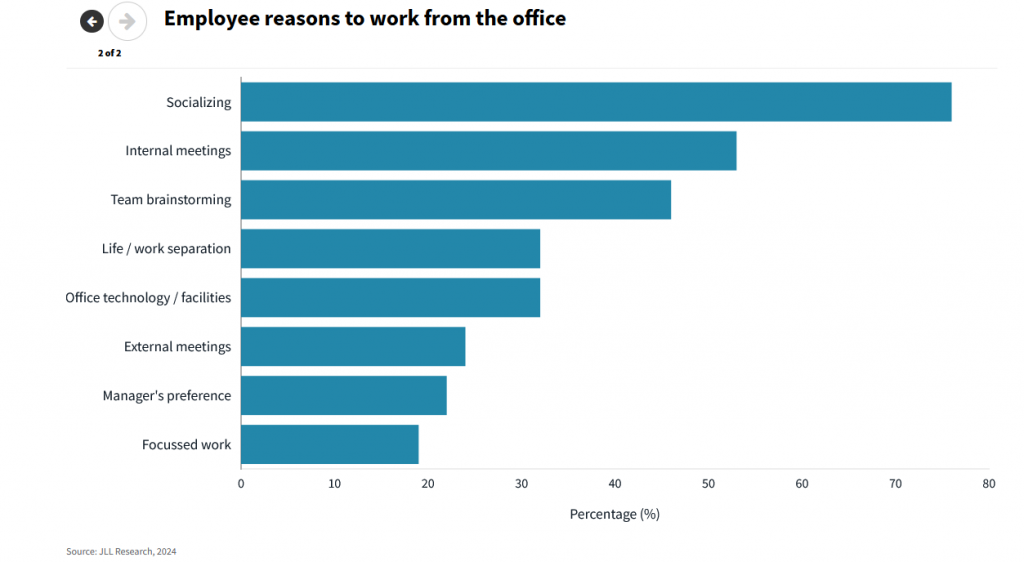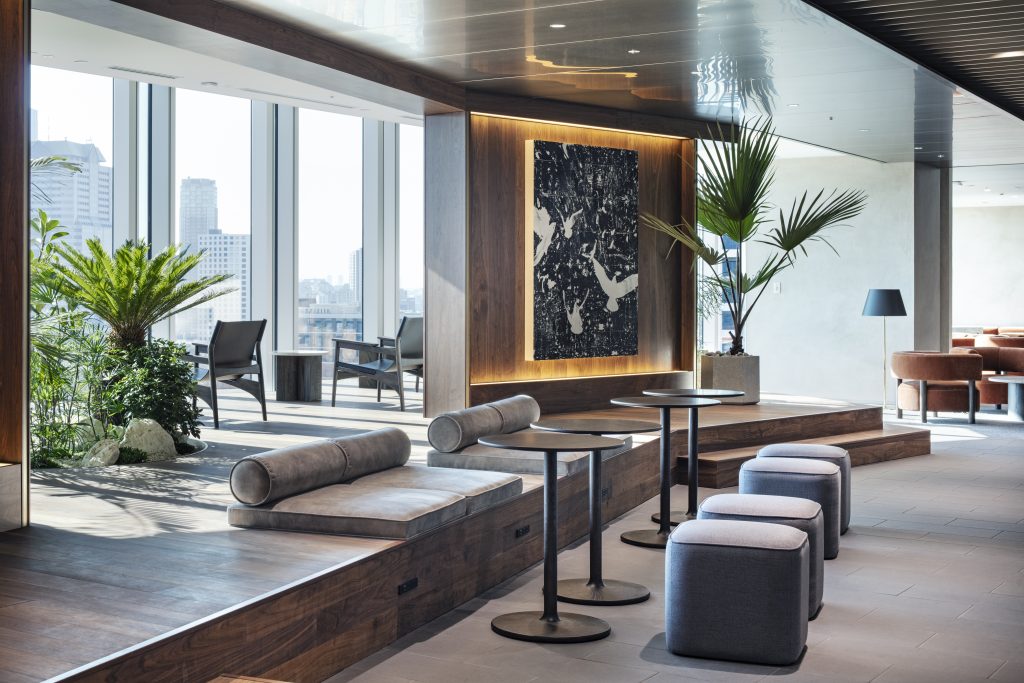JLL’s latest Future of Work survey and workplace design studies reveal that an investment in office design can improve the work environment and increase employee performance and retention, especially for technology-savvy Gen Alphas.
Imagine if a company had the ability to increase employees’ satisfaction scores by 38%, improve their feelings of productivity by 54%, boost well-being by 77%, and lower overall stress levels – just by upgrading the design of an office. That’s exactly what JLL did during a recent office relocation in Tokyo, Japan.

The new office design incorporates the latest in ergonomics, aesthetics and productivity technology, tailored to the needs of JLL’s Japan team. It accommodates diverse working styles, has plenty of natural light, controls noise levels, and is also environmentally friendly. After the move, JLL sent out an employee survey and found a significant increase in office space satisfaction (from 58 to 83) and productivity levels (52 to 71), while reporting lower stress (42 to 37) in the new office (all on a scale of 1-100).
More Complex Work Requires a Honed Design Strategy
The results of the office relocation project underscore the findings of JLL’s Future of Work 2024 survey, which shows the design of the workplace is paramount to a company’s success. This is especially important in today’s digital world and for the next generation of employees. While the hybrid work life may enhance the workplace experience, it also makes the work itself more complex – whether it’s navigating how to attract talent, build company culture or collaborate with people no matter where they are. Corporations must focus on the employee experience to overcome that hurdle, and that starts with design, building a firm foundation of flexible spaces and technology.
In the survey, 64% of business leaders expect to significantly increase headcount by 2030 and 54% foresee their real estate footprint to expand in the next five years. This increase includes Gen Alpha, who have been familiar with anything with a screen since an increasingly young age and are predicted to become the largest and most diverse generation so far (McCrindle Research). So, how should business leaders prepare for a flood of tech-savvy talent?
1. Have the Right Space for the Job
Maybe five years ago people might have been satisfied coming into an office that had a comfortable chair and great coffee, but not now. Whether companies have a hybrid policy (56% of survey respondents) or a full-time in-office policy (44% of respondents), design flexibility is paramount for employees to thrive. Business leaders must provide staff with specially designed office spaces that support their various ways of working.
For instance, the biggest incentive offices offer is something employees don’t have at home: in-person interactions with colleagues. Having the right spaces for collaborating and socializing is just as important as having areas for heads-down work, phone calls and more formal meetings. Matching the right space to the job helps keep employees engaged, productive and more likely to stick around.

But, let’s take a step beyond that. The lines that define different ways of working are blurry. Workplace design isn’t just about offering a one size-fits-all collaboration environment; it’s also about understanding holistically how people interact, form social bonds and share knowledge. The “right spaces” vary and business leaders need a custom-fit design plan that incorporates their company’s unique brand, organizational structure, business model and workplace culture to succeed.
2. Appeal to the Human Element
Corporate goals are shifting more toward human-centric solutions to attract top talent and allow them to thrive, leading to better retention. This can also relate to the rationale behind in-office policies; in JLL’s survey, 58% of employers believe cultivating culture and a sense of belonging to be an important reason for employees to work in the office.

With Gen Alpha predicted to become the most diverse generation, fostering greater inclusion and belonging in the work environment will become increasingly important and is predicted to attract more quality talent (Gartner).
With all of this emphasis on people, leaders are asking these questions: How do we purposefully create new spaces and experiences that allow employees to work in a hybrid world? What is the technology we need to support that? How do we balance the health and wellness of our employees? The answers are key to allowing employees to do their best work.
3. Create a Positive Work Environment with AI
In JLL’s Future of Work survey, nearly nine in 10 business leaders said AI would change how their workforce operates within the next five years. What does this mean?
In the past, AI was focused mostly on operational tasks via automation, like space utilization and physical space design. Currently, workspaces have the ability to adapt to a person’s needs. But looking toward the future, AI will become more personalized. For example, it can aggregate data about how someone spends their time and with whom and where (by checking their calendar) to craft a personalized schedule built around their favorites.
The year ahead might be one where technology enhances peoples’ abilities to feel themselves accurately reflected in a workplace outside of their home, which is especially important for Gen Alphas, with 92% believing it’s important to be themselves (Razorfish, Basis Technologies). Concepts like predictive analytics and dynamic workplace optimization will continue emerging throughout 2025 to help manage and enhance spaces for individuals. We can also expect more smart building technology that can adapt to the needs of its occupants based on how employees use the physical space.
4. Build Social Purpose and Work Culture
JLL Design undertook a project at the headquarters of a retail organization to reimagine how it could better support its numerous employee special interest groups, by equipping spaces with the right amenities, technology and communication tools.

JLL had inclusion at the forefront when designing these spaces, which would help build deeper social purpose into the client’s work culture. The team held multiple interviews and work sessions with stakeholders from each affinity group to understand their unique functional, emotional and self-expressive needs. The resulting design included elements to drive employee connection, such as: flexible spaces that can easily include remote workers in meetings, technology that can transform space on demand into an event area that supports virtual attendees, a kitchen to serve food for cultural celebrations and a shop with merchandise for each group, allowing members to express their affiliations proudly. This in turn would help champion an inclusive work culture that lets employees be themselves.
This is a great example of what to expect from the most future-forward organizations, along with a larger emphasis on employees embracing corporate values in the workplace, by promoting sustainable practices and cultivating a healthy relationship with the local community. Leaders can make the workplace meaningful to their employees by aligning the corporate brand with personal values. Incoming Gen Alphas also place great importance on authenticity (Razorfish, Basis Technologies) and positive social impact (The Robin Report), so the more visible company values, the better.
It’s Time to Shift to a Future-Forward Mindset
The road ahead looks busy for design and construction with well over half of all organizations surveyed expecting to spend more on design, fit out and refurbishment by 2030. Real estate investments are now understood to be so much more than a physical building or office space. The physical construct is completely intertwined with the (very human) employee experience and creates fertile ground for everyone, no matter what generation, to perform at their best.


